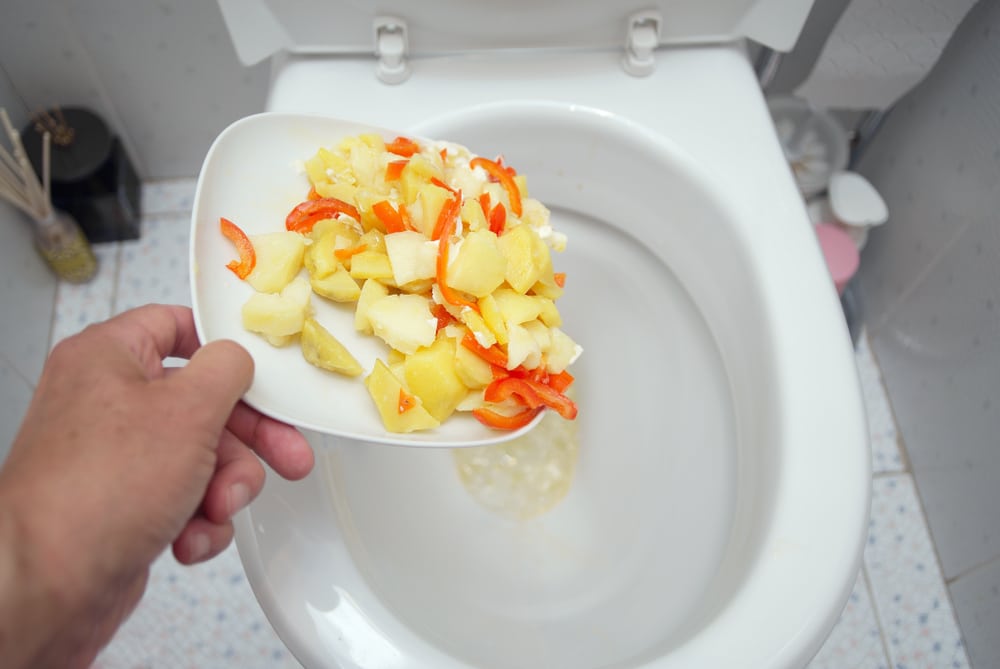Is it Allowed to Flush Food in the Toilet?
Is it Allowed to Flush Food in the Toilet?
Blog Article
What are your thoughts concerning Think Twice Before Flushing Food Down Your Toilet?

Intro
Many people are commonly confronted with the dilemma of what to do with food waste, especially when it concerns leftovers or scraps. One common question that arises is whether it's all right to purge food down the bathroom. In this short article, we'll delve into the reasons why people might take into consideration flushing food, the effects of doing so, and alternate methods for appropriate disposal.
Reasons why people may think about purging food
Lack of recognition
Some individuals may not recognize the prospective harm caused by purging food down the commode. They may wrongly think that it's a harmless method.
Benefit
Purging food down the commode might seem like a quick and easy service to taking care of undesirable scraps, particularly when there's no close-by trash can offered.
Idleness
In many cases, individuals may merely select to flush food out of sheer negligence, without considering the consequences of their actions.
Effects of flushing food down the commode
Environmental effect
Food waste that winds up in rivers can contribute to contamination and harm marine environments. Additionally, the water used to purge food can stress water sources.
Plumbing concerns
Flushing food can result in stopped up pipelines and drains, creating pricey plumbing repairs and aggravations.
Types of food that should not be flushed
Coarse foods
Foods with fibrous structures such as celery or corn husks can get entangled in pipelines and trigger obstructions.
Starchy foods
Starchy foods like pasta and rice can take in water and swell, resulting in blockages in pipes.
Oils and fats
Greasy foods like bacon or cooking oils need to never be flushed down the toilet as they can solidify and create blockages.
Correct disposal techniques for food waste
Making use of a garbage disposal
For homes equipped with garbage disposals, food scraps can be ground up and purged via the plumbing system. Nevertheless, not all foods appropriate for disposal in this manner.
Recycling
Specific food product packaging products can be recycled, reducing waste and minimizing ecological influence.
Composting
Composting is an eco-friendly method to take care of food waste. Organic products can be composted and made use of to improve dirt for horticulture.
The relevance of correct waste monitoring
Lowering environmental injury
Correct waste administration practices, such as composting and recycling, aid lessen contamination and maintain natural resources for future generations.
Protecting plumbing systems
By preventing the technique of flushing food down the toilet, homeowners can avoid pricey pipes repair work and keep the integrity of their plumbing systems.
Conclusion
In conclusion, while it may be appealing to flush food down the toilet for comfort, it's important to understand the potential consequences of this activity. By embracing proper waste administration methods and getting rid of food waste properly, people can contribute to much healthier plumbing systems and a cleaner setting for all.
THINK TWICE BEFORE FLUSHING FOOD DOWN YOUR TOILET IN FALLBROOK CA
Let’s be honest, we’re really supposed to be tossing rotten or leftover food in the compost bin or trash can. But many people like to place scraps of food down the drain of, say, their kitchen sink. That’s why the garbage disposal was invented: so we can continue to place certain foods down the drain without clogging our drain in the process. Smart.
But not all of us have the luxury of having a garbage disposal installed. So, you might continue to shove food down your sink drain anyway – or worse: you might flush them down your toilet! If you’re guilty of doing the latter, you’re going to want to stop, and here’s why:
Toilet Drains Aren’t Designed to Handle Food!
There’s your answer: food just doesn’t belong in your toilet. It may seem like your toilet drain is wider than the drains of your sinks, but truth be told, that isn’t actually the case. The narrower pipes of your toilet leave your plumbing at risk for clogging if you do happen to flush your food. In addition, food doesn’t break down as quickly that toilet paper and human waste do. In turn, this leaves your toilet at risk for a nasty clog.
Although a flush of a tiny pinch of food every now and then isn’t going to completely damage your toilet, there are certain foods that should absolutely not be flushed in your toilet at all. These include starchy foods like mashed potatoes, grains, hard pieces of food that are slow to break down, and fats and oils.
The latter categories of food are particularly problematic as they may harden, expand as they absorb water, break down slowly in your system, or generally create the perfect obstruction with their gelatinous composition. These are all things you don’t want in your plumbing system!
Experiencing a Toilet Clog?
Nobody’s perfect, and we all make mistakes. Sometimes one of the mistakes people make is flushing food down their toilet and later realizing that it wasn’t the best thing to do once they see that their toilet is now clogged. Uh-oh!

As an enthusiastic reader about Is it safe to flush food (especially rice) down the toilet?, I figured sharing that blog post was appropriate. Loved our post? Please share it. Help others locate it. I praise you for being here. Please pay a visit to our site back soon.
Call Today Report this page